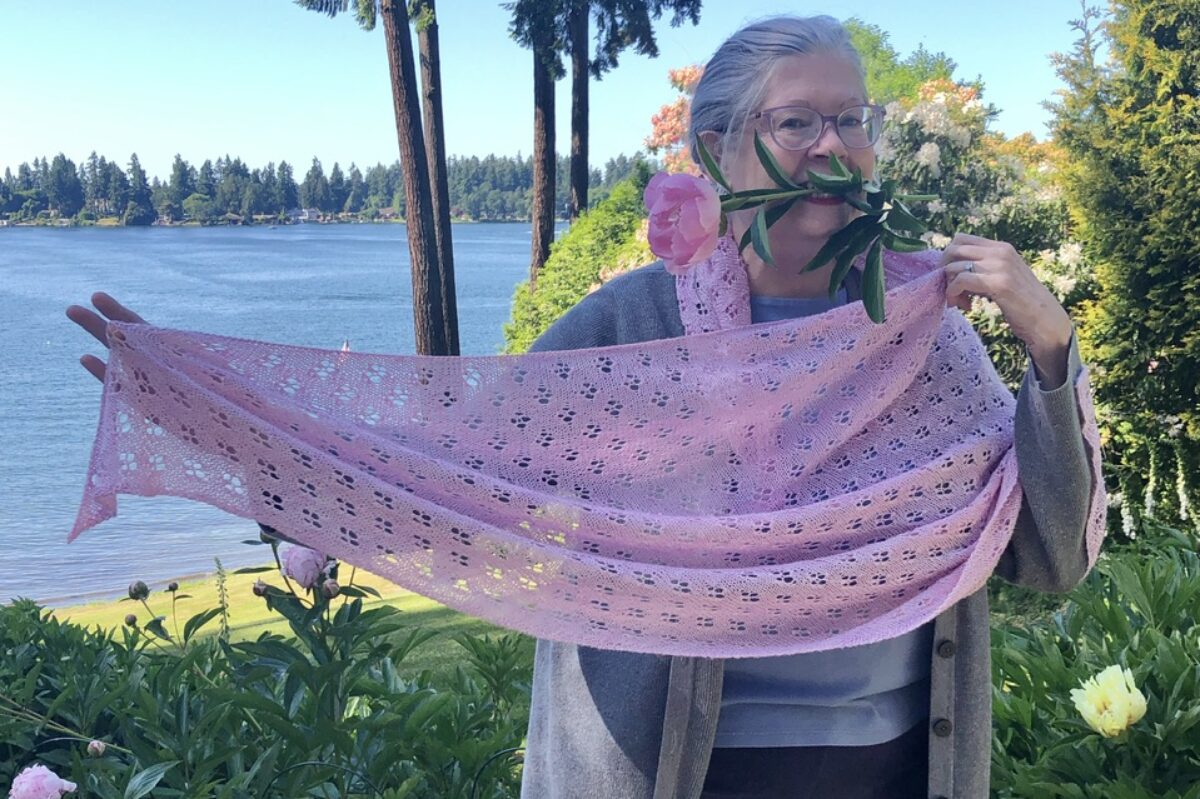Kiri was a bust. I spent much of the day trying to get it started. The pattern is described as easy, for beginner knitters. After a couple of false starts and tinking back, I eventually ripped it out. I’m not a beginner lace knitter by any means, but there was something wonky with this pattern. I couldn’t get the stitch counts to come out, and I just didn’t like the look of the pattern in this yarn. Last but not least, I use Knit Companion to keep track of absolutely everything I knit, but especially lace charts. The grid on the pattern chart was “off”, with grid squares that varied ever so slightly from place to place. This made adding stitch markers and counts impossible. It was driving me nuts.
So here is the reboot:


This is much better behaved. The entire thing is charted, the pattern repeats don’t shift around aimlessly, and best of all, the main shawl body chart has 16 rows, 12 of which are plain knit or purl rows. This is much more what I had in mind to keep my sanity.
The pattern is Feather Duster, by Susan Lawrence.
By the way, WordPress has stopped emailing me blog comments again. I can still reply directly from the website, but if I miss a comment and don’t answer you, that’s why. ????

I like this new pattern very much.
Enabler.
I’ve had that sort of experience, and wondered if the designer simply didn’t use markers, and thus didn’t realize they wouldn’t work in the pattern. Or maybe felt it was worth it? I don’t know, but it doesn’t work for me, either. Better luck with this pattern!
That looks so pretty! And if it helps your sanity, all the better.
Oh yeah, that’ll be MUCH easier. 😎
I’ve done a lot of kiri shawls, maybe 2 dozen. All my female relatives and all my female friends have one. There is a trick and once you get it kiri is easy. Kiri increases every right side row by 4 stitches to shape the triangle. In ADDITION Kiri increases one stitch at each of the 4 “corners” every first row of the pattern repeat. This is to have something to begin the new leaf with. Each repeat lengthwise produces a new repeat horizontally. The time to place a new marker is when you increase this “extra” corner stitch. The atitches produced by the previous repeat make the new finished leaf, and new “starter” stitch stands alone in all his glory as the new leaf. Take a colored marker and mark the “extra” increases on your pattern so you don’t forget them. Then your markers work out right and all is well. I always use markers and I never have to fiddle with them, as long as I do this extra increase right. When I was startimg my first kiri a friend who had done one explained this to me. Perhaps the designer should make a note to this effect in the pattern at alltangledup.
Julie in San Diego